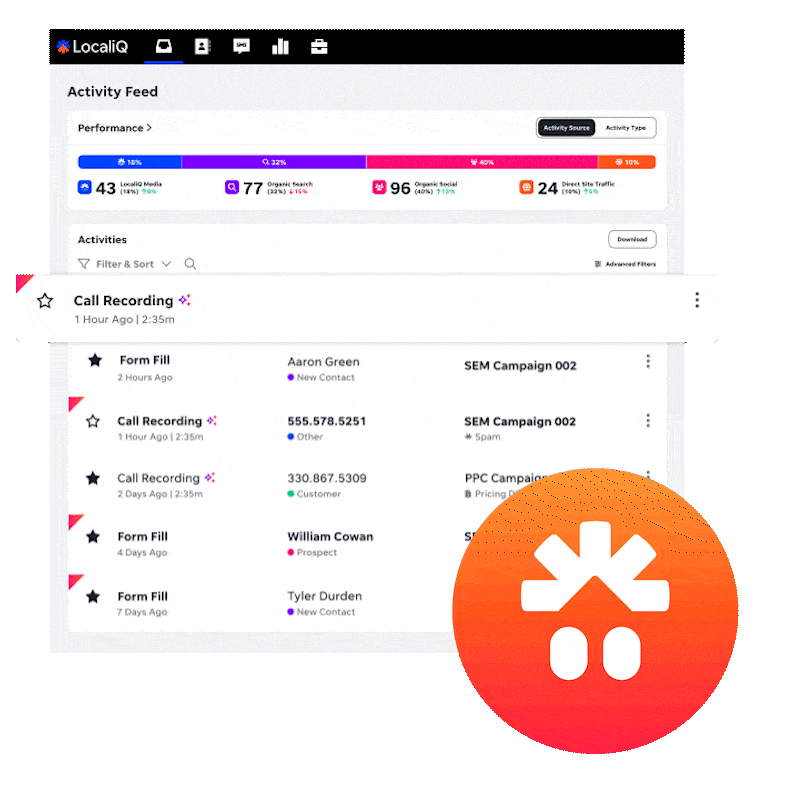- Blog
- Website Speed and Experience Matter
Why a Fast, User-Friendly Site Can Make or Break Your Marketing
Have you ever clicked on a website that took forever to load… and left before it even opened? You’re not alone.
In today’s world, people expect websites to be quick, simple and mobile-friendly. These expectations are not just from the general public but Google as well. Whether you’re running ads, relying on SEO, or both, your website’s speed and user experience directly affect how many customers you attract — and how many you lose.
Let’s break down why website speed and experience matter more than ever in 2025, and what small businesses can do to fix common issues.

Why Google Cares About Your Website Experience
Google’s goal has always been to give users the best possible results — not just the right information, but also a good experience while finding it.
That’s why Google measures what it calls Core Web Vitals, which are key indicators of how user-friendly your website is. These include:
- Loading speed: How quickly your site appears when someone visits it
- Interactivity: How soon users can click buttons or scroll without delays
- Visual stability: Whether images or text move around as the page loads
If your site is slow, clunky or unstable, Google notices — and that can hurt your search rankings.
But here’s the kicker: it doesn’t just affect your SEO. It can also make your paid ads (like Google Ads or Performance Max campaigns) less effective.
A Slow Website Can Cost You More Than You Think
A slow or poorly built website doesn’t just frustrate users — it costs you money.
Here’s how:
- Higher bounce rates: Studies show that if a page takes longer than 3 seconds to load, more than half of users leave. That’s potential leads gone before they even see your offer.
- Lower ad performance: Google rewards fast, high-quality sites with better “landing page experience” scores, which can lower your cost per click (CPC). A faster site means better ad performance — and cheaper leads.
- Lost credibility: A slow site makes your business look outdated or untrustworthy. In contrast, a sleek, mobile-optimised website builds confidence instantly.
If you’ve ever wondered why your ads are underperforming even when your targeting is spot-on, your website might be the missing piece.

How Website Speed and Design Work Together
Speed isn’t everything — but it’s a big part of a great user experience. Even a fast site can lose customers if it’s hard to navigate or doesn’t look right on a phone.
Think about how most people browse today:
- Over 70% of web traffic in Australia now comes from mobile devices.
- Users make up their minds about a business within the first 5 seconds of landing on its website.
That means your site needs to look good and work smoothly on every device — desktop, tablet and especially mobile.
A clean, easy-to-read layout, clear calls-to-action (like “Call now” or “Get a quote”), and fast navigation all make a big difference.
Simple Ways to Improve Website Speed and Experience
You don’t need to be a web developer to make meaningful improvements. Here are practical steps any small business can take:
- Test your speed
Use free tools like Google PageSpeed Insights or GTmetrix to check how fast your site loads. They’ll show what’s slowing it down — whether it’s large images, unnecessary plugins or outdated code. - Optimise your images
Large, high-resolution photos look great but can drag your site down. Compress images using tools like TinyPNG or Squoosh without losing quality. - Simplify your design
Cluttered pages take longer to load and confuse visitors. Keep your design clean and your message clear. - Go mobile-first
Your website should adjust automatically to different screen sizes. Test it on your phone to make sure buttons, menus and forms are easy to use. - Fix broken links and outdated pages
A broken link or old promotion can frustrate customers. Regularly review your site and make sure everything works as it should. - Choose a reliable hosting provider
A cheap host might save a few dollars but can slow your site down. Pick a provider that offers strong uptime, fast servers and local support.

How a Great Website Boosts SEO and Ads
When your website is fast and user-friendly, it doesn’t just make visitors happy — it improves every part of your digital marketing.
- Better SEO: Google pushes faster, better-built sites higher in rankings.
- Lower ad costs: Ads linked to a high-quality landing page can achieve better Quality Scores, which can reduce cost per click.
- More conversions: People are more likely to fill out forms, call or buy when the experience is smooth.
In short, a well-built site makes every marketing dollar go further.
The Bottom Line
In 2025, your website isn’t just an online brochure — it’s the engine behind your marketing.
If it’s slow, confusing or not mobile-friendly, it’s holding your business back. But with a few smart updates, you can turn it into a powerful tool that attracts more visitors, lowers your ad costs and boosts conversions.
Start small:
- Test your site’s speed
- Simplify your layout
- Make sure it looks perfect on mobile
A better website isn’t just about looking good — it’s about performing better, ranking higher and giving customers the experience they expect.






